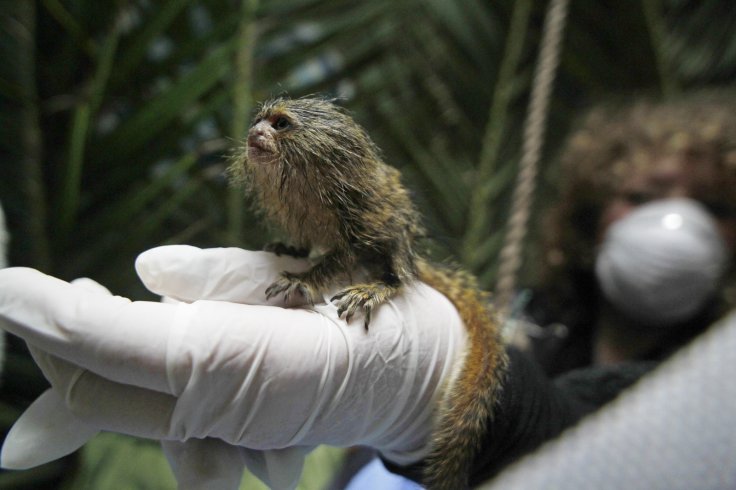
World's smallest monkey, Pygmy Marmoset, weighing in at just 100 grams and roughly has a size of a big tomato, is not one species but two. Earlier in 1823, these adorable insect-eating monkeys were described scientifically by German naturalist Johann Spix, who called them as Cebuella pygmaea.
According to Science Daily, a new research, led by Jean Boubli, who is a professor of tropical ecology and conservation, at the University of Salford, UK and the team, which included scientists from four Brazilian research institutes and US-based Conservation international has found that these monkeys can be categorized into two separate species.
The study showed that while one species is from is found south of the Amazon River, east to the Madeira River in Brazil, and possibly extending into Peru and Bolivia, the other one is found in Brazil's Japurá basin, extending west into Colombia, northern Peru and Ecuador.
The research, which was proceeded with latest techniques in genomics and phylogenetic, also mentioned that these two clades have diverged from one another around two to three million years ago.
The study was published in the journal Molecular Phylogenetics and Evolution, where the researchers mentioned their findings related to two the two species.
The research was restricted to pygmy marmosets living in the Brazilian Amazon but according to reports stated that in distant future researchers could lead further experiments on multiple other pygmy marmoset species, who are living in other forests.
Boubli said, "There has long been confusion over the taxonomy of these wonderful creatures mostly because Spix did not record in his travel diaries the exact location where he collected the type of Cebuella pygmaea in the early 1800s. That creates confusion as to which of the two recently uncovered species should keep the original name; that of the north or of the south of the Amazon."
The beauty of genomics means that we can now see the pygmy marmoset is a term for two species which have been evolving independently for nearly 3 million years," he further added.
The research team has mentioned that the species is on the International Union for Conservation of Nature's (IUCN) Red List of Threatened Species and currently marked as 'Least Concern'.
But disease epidemics that have recently prompted the IUCN Species Survival Commission's Primate Specialist Group to recommend the species' status to be changed to 'Vulnerable'.
However, the researchers are now collecting more data, including faeces from the different parts of the world to clarify the classification, especially of organisms of the Pygmy Marmosets. The team will also look for the geographic ranges of already identified two species and probably even that of new ones.









